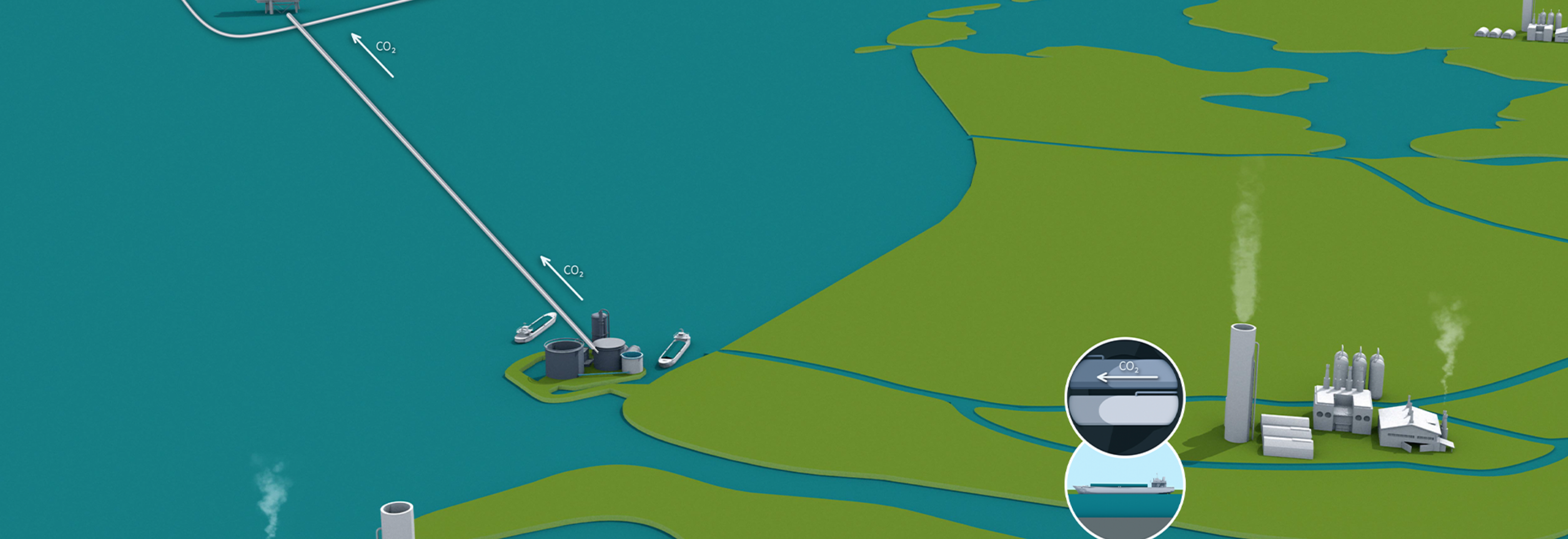

14 02 2023
CO₂ Specificaties voor Aramis transportinfrastructure
| Class | Component | Constraint | Unit | Ships | Pipeline infrastructure |
|---|---|---|---|---|---|
| CO₂ | larger than | mol% | balance | 95 | |
| H₂O | less than | ppmmol | 30 | 70⁽¹⁾ | |
| inerts | N₂ | less than | mol% | - | 2.4 |
| inerts | O₂ | less than | ppmmol | 10 | 40 |
| inerts | H₂ | less than | ppmmol | 500 | 7500 |
| inerts | Ar | less than | mol% | - | 0.4 |
| inerts | CH₄ | less than | mol% | - | 1 |
| inerts | CO | less than | ppmmol | 1200 | 750 |
| inerts | O₂+N₂+H₂+Ar+CH₄+CO | sum less than | ppmmol | 2000 | 40000 |
| NOₓ | sum less than | ppmmol | 1.5 | 2.5⁽⁴⁾ | |
| sulphur | SOₓ | sum less than | ppmmol | 10 | - |
| sulphur | H₂S | less than | ppmmol | 5 | 5 |
| sulphur | CarbonylSulphide | less than | ppmmol | - | -⁽¹⁾ |
| sulphur | DimethylSulphide | less than | ppmmol | - | -⁽¹⁾ |
| sulphur | H₂S + COS + SOₓ + DMS | sum less than | ppmmol | - | 20 |
| Volatile organic components | Amine | less than | ppmmol | 10 | 1 |
| Volatile organic components | Formaldehyde | less than | ppmmol | 20 | - |
| Volatile organic components | Acetaldehyde | less than | ppmmol | 20 | -⁽¹⁾ |
| Volatile organic components | Aldehydes | sum less than | ppmmol | - | 10 |
| Volatile organic components | carbolylic acids & amides | sum less than | ppmmol | - | 1 |
| Volatile organic components | phosphorus-containing compounds | sum less than | ppmmol | - | 1 |
| Volatile organic components | NH₃ | less than | ppmmol | 10 | 3 |
| Volatile organic components | Ethylene (C₂H₄) | sum less than | ppmmol | - | -⁽¹⁾ |
| Volatile organic components | H-Cyanide (HCN) | less than | ppmmol | - | 2 |
| Volatile organic components | Total volatile organic compounds (excl. MeOH, EtOH, aldehydes) | sum less than | ppmmol | 10 | 10 |
| Volatile organic components | Methanol | less than | ppmmol | 40 | 620 |
| Volatile organic components | Ethanol | less than | ppmmol | 20 | 20 |
| Heavies | glycols (TEG) | sum less than | - | Follow dew-point specification | |
| Heavies | C₂₊ (aliphatic hydrocarbons) | sum less than | ppmmol | - | 1200 |
| Heavies | Aromatic Hydrocarbons | sum less than | ppmmol | - | 0.1 |
| Metals | Hg | less than | ppbmol | 30 | - |
| Metals | Cadmium + Thalium | sum less than | ppbmol | 30 | - |
| Dew-point | Dew point (any liquid phase) | sum less than | °C (@ 20 bar) | - | -10 ⁽²⁾ |
| Solids | Full removal cut-off diameter | Less than | micron | 1⁽³⁾ | 1⁽³⁾ |
